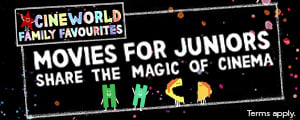
To celebrate the release of Disney-Pixar's Onward and Soul in 2020, we're taking you on a nostalgia-fuelled journey through the studio's classic films. This week: Toy Story 2.
What's the story of Toy Story 2?
Cowboy doll Woody (Tom Hanks) and space ranger Buzz Lightyear (Tim Allen) are now firm friends. They've learned to live in harmony in owner Andy's room alongside the rest of his beloved toys. But their friendship is tested to the limit when Woody falls into the hands of an unscrupulous toy collector, and locked inside a city centre apartment. While there, Woody is informed of his substantial monetary value as a toy, and must decide whether to stay or return to the gang. Meanwhile, Buzz and the rest of Woody's friends leave Andy's house to launch a rescue.
How did Toy Story 2 get made?
It's remarkable to think that Disney-Pixar's Toy Story 2 was never originally destined for the big screen. A Toy Story sequel was first mentioned a month after the release of the studio's 1995 masterpiece, one that opened the world's eyes to the possibilities of feature-length CGI animation. Toy Story had dazzled not just because of its technical prowess, but the elemental beauty of its premise, riffing on the bond with toys that everyone around the world has felt at some stage in their childhood. The film was catapulted to Oscar-winning success and instantly became a classic, setting Pixar on course to become one of the world's dominant animation studios.
However, in 1995, then Disney chairman Joe Roth envisaged Toy Story 2 as a direct-to-video movie, spurred on by the commercial success of Return of Jafar, the 1994 small-screen follow-up to 1992's blockbuster Aladdin. It was initially unclear if stars Tom Hanks and Tim Allen would return; however, they eventually signed on, as did the original film's director John Lasseter, who, as a self-avowed collector of classic toys, sought to fashion the narrative around his personal experiences.
"The story of Toy Story 2 is based a lot on my own experience," Lasseter explained. "I'm a big toy collector and a lot of them are like antiques, or one-of-a-kind toys, or prototypes the toy makers have given me. Well, I have five sons, and when they were little and they loved to come to daddy's work, and come in into daddy's office and they just want to touch and play with everything. And I was sitting there saying 'Oh no, that's uh, you can't play with that one, oh no, play with this one, oh no....' and I found myself just sitting there looking at myself and laughing. Because toys are manufactured, put on this Earth, to be played with by a child. That is the core essence of Toy Story. And so I started wondering, what was it like from a toy's point of view to be collected?"
However, the production of the film turned out to be especially difficult, even by Pixar standards, which are often accelerated into production. The nature of Pixar's involvement in the project was initially unclear, as the animators were pre-occupied with the making of 1998's A Bug's Life. The creative team on Toy Story 2 was initially siloed, supervised by Lasseter who sought creative tweaks that would uphold the usual standard of Pixar animation. However, the pressure was on when the project was elevated from relatively lowly straight-to-video movie to imminent theatrical release with serious marketing potential.
This occurred in November 1997, when Disney executives Roth and Peter Schneider, unhappy with the slow progress of the movie, were invited to review footage from the movie. They re-assessed Toy Story 2's potential and said it was worthy of a big screen release, which put the entirety of Pixar's team under the kosh. Lasseter had initially been taken up with duties on A Bug's Life; upon completion of that movie, he was able to give his full attention to Toy Story 2, albeit with the help of Lee Unkrich (later of Toy Story 3 and Coco fame), whom he elevated to the role of co-director.
Pixar animation CEO Steve Jobs officially announced the shift from small screen to big in February 1998. However, as the project developed, many at Pixar weren't happy with how Toy Story 2 was coming together. The main responsibilities eventually cut three ways: Lasseter would focus on modelling and lighting, Unkrich on editorial and layout, and co-writer Ash Brannon on development, story and animation. However, with a mere 18 months to get the film completed and ready for its release date, the Pixar staffers started to suffer stress and even RSIs (repetitive strain injuries) as a result of their workloads.
"When we went from a direct-to-video to a feature film and we had limited time in which to finish that feature film, the pressure really amped up," said Karen Jackson, who was elevated from associate producer to full producer. "Forget seeing your family, forget doing anything. Once we made that decision [on the schedule], it was like, 'Okay, you have a release date. You're going to make that release date. You're going to make these screenings.'"
It's therefore remarkable to note how beautifully Toy Story 2 comes together. It dovetails perfectly with the original, largely because so many of its concepts are deleted ones from the first Toy Story. Wheezy the squeaky penguin was initially intended for the 1995 movie, and Woody's nightmare about being thrown into a trashcan was taken from a deleted scene from the first film. Given that Lasseter derived the idea from his own experiences, it's little wonder that the project resonates with a real depth of feeling, in both its big and small moments.
The movie builds on the themes of the first movie, conceptually and also through its delightful new characters. Cowboy Jesse (voiced with exuberance by Joan Cusack) masks her own story of abandonment behind a mask of bonhomie, a sign of how brilliantly Pixar can graft recognisable human emotion onto otherwise inanimate objects. Apparently benevolent prospector Stinky Pete (Kelsey Grammer) shows how jealousy and isolation are all-consuming feelings lurking in humans and non-humans alike; he's threatened when Buzz and the gang enter his fiefdom, and attempt to take pet project Woody away. Above all, it's a movie about obsolescence, and the fear that we are not longer relevant.
As with all Pixar's films, it's also uproariously funny, showing a brilliant awareness of pop culture heritage. Just as Buzz came to terms with his status as a toy in the first movie, he's now presented with a reflection of his former self in the form of the nefarious Zurg. As established by the merchandising companies, Buzz and Zurg are mortal enemies, and the latter persists in his belief that he is both Buzz's mortal enemy and also father figure. Not only is it hugely entertaining, but it also has important messages of self-awareness and sentience that gain in resonance relative to the age of the viewer. In other words: classic Pixar.
Who composed the soundtrack for Toy Story 2?
As with the first Toy Story and A Bug's Life, the soundtrack for Toy Story 2 was composed by Randy Newman. The Oscar-nominated composer and songwriter had imprinted on an entire generation with his classic Toy Story song 'You've Got A Friend In Me', and his energetic orchestral underscore helped tie Woody and Buzz's first adventure together.
Newman stays loyal to 'You've Got A Friend In Me' in the second movie, establishing it as the de-facto theme of the series. (He would later re-iterate the song in the third and fourth movies.) In Toy Story 2, he's perhaps most remembered for cowgirl Jesse's heartrending number 'When She Loved Me', one of the most beautiful in Disney-Pixar's canon (performed by Sarah McLachlan), and Oscar-nominated for Best Original Song.
It underlines the central principle of the Toy Story franchise: that a toy's bond with their owner doesn't dim with the passage of time, and while the owner might grow up and move on, a toy will forever cherish that friendship. It immediately established Jesse as a classic, sympathetic character, and deepened the themes of sentience and compassion that would later bloom in Toy Story 3.
Newman's accompanying score is perhaps easier to overlook, but there are plenty of highlights. He again riffs on classic Western conventions when introducing Jessie, Bullseye and Stinky Pete, and there are some fabulous action sequences. The riffing on John Williams' Star Wars music during the Zurg sequences is hilariously funny, and the orchestral writing during the climactic airport chase is worthy of the best action movie. (Ironically, between Toy Story and Toy Story 2, Newman had composed the score for Air Force One, which was ultimately rejected and replaced with another by Jerry Goldsmith.)
What are some classic quotes from Toy Story 2?
Woody: "Ride like the wind, Bullseye!"
Zurg: "No, Buzz. I am your father."
Buzz: "Woody once risked his life to save me. I couldn't call myself his friend if I weren't willing to do the same."
Buzz: "Somewhere in that pad of stuffing is a toy that taught me that life is only worth living if you're being loved by a kid. And I traveled all this way to rescue that toy because I believed him."
Barbie: "And this is the Buzz Lightyear aisle. Back in 1995, short-sighted retailers did not order enough dolls to meet demand."
Rex: "I can't look. Could somebody please cover my eyes?"
Aliens: "You have saved our lives! We are eternally grateful!"
What was the legacy of Toy Story 2?
Belying its troubled production, Toy Story 2 was miraculously hailed as an improvement on its groundbreaking predecessor. Although it didn't win any Oscars, critics and audiences were knocked out by the film's technical sophistication and emotional maturity. The movie is one of a handful on review aggregate website Rotten Tomatoes to hold a perfect 100% rating; it is, in fact, the highest-rated Pixar movie on the site.
Empire Magazine's Caroline Westbrook said the film "Provides the kind of exhilarating cinema experience that leaves you gasping in admiration and actually wanting a third installment". (She was way ahead of herself with that assessment.)
In-keeping with the movie's Star Wars in-jokes, Variety's Todd McCarthy described it thusly: "In the realm of sequels, Toy Story 2 is to Toy Story what The Empire Strikes Back was to its predecessor, a richer, more satisfying film in every respect."
And in 2010 retrospective review, The Times journalist Wendy Ide said the film's impact hadn't dimmed: "The film remains one of Pixar's finest moments. It's unexpectedly dark in tone, and, with its underlying theme of mortality and abandonment, it's perceptively written and superbly animated."
Just three feature films into their run, and Pixar Animation Studios were demonstrating the storytelling strengths that would eventually become their stock-in-trade. Little did we know at the time of Toy Story 2's release that things would get even better.
What was the next Disney-Pixar movie to be released?
Monsters, Inc, released in 2001, introduced us to loveable friends Mike and Sully.
Click here to book your tickets for Onward, released in Cineworld cinemas on the 6th of March. Soul, meanwhile, is released on the 19th of June. And don't forget to tweet us your favourite Disney-Pixar movies @Cineworld.
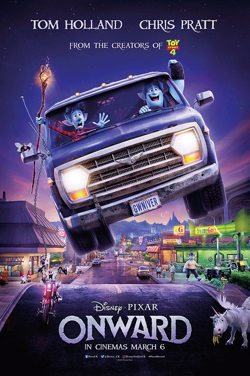

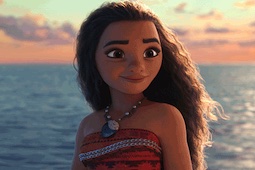
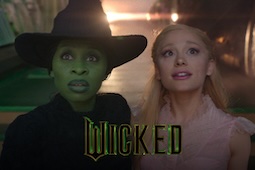




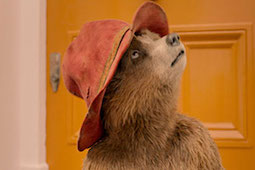



.jpg)
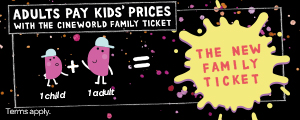

.jpg)
.png)


